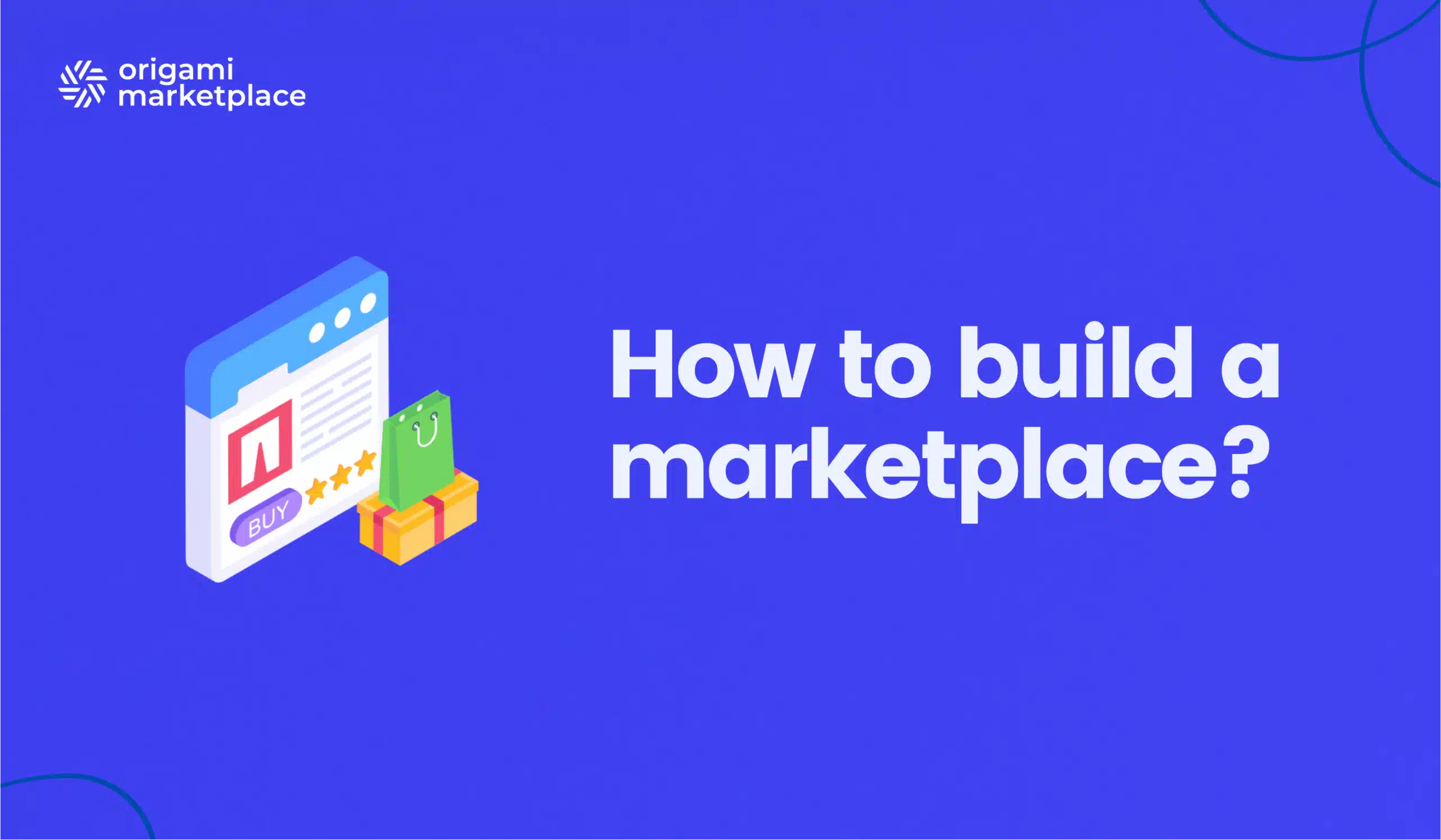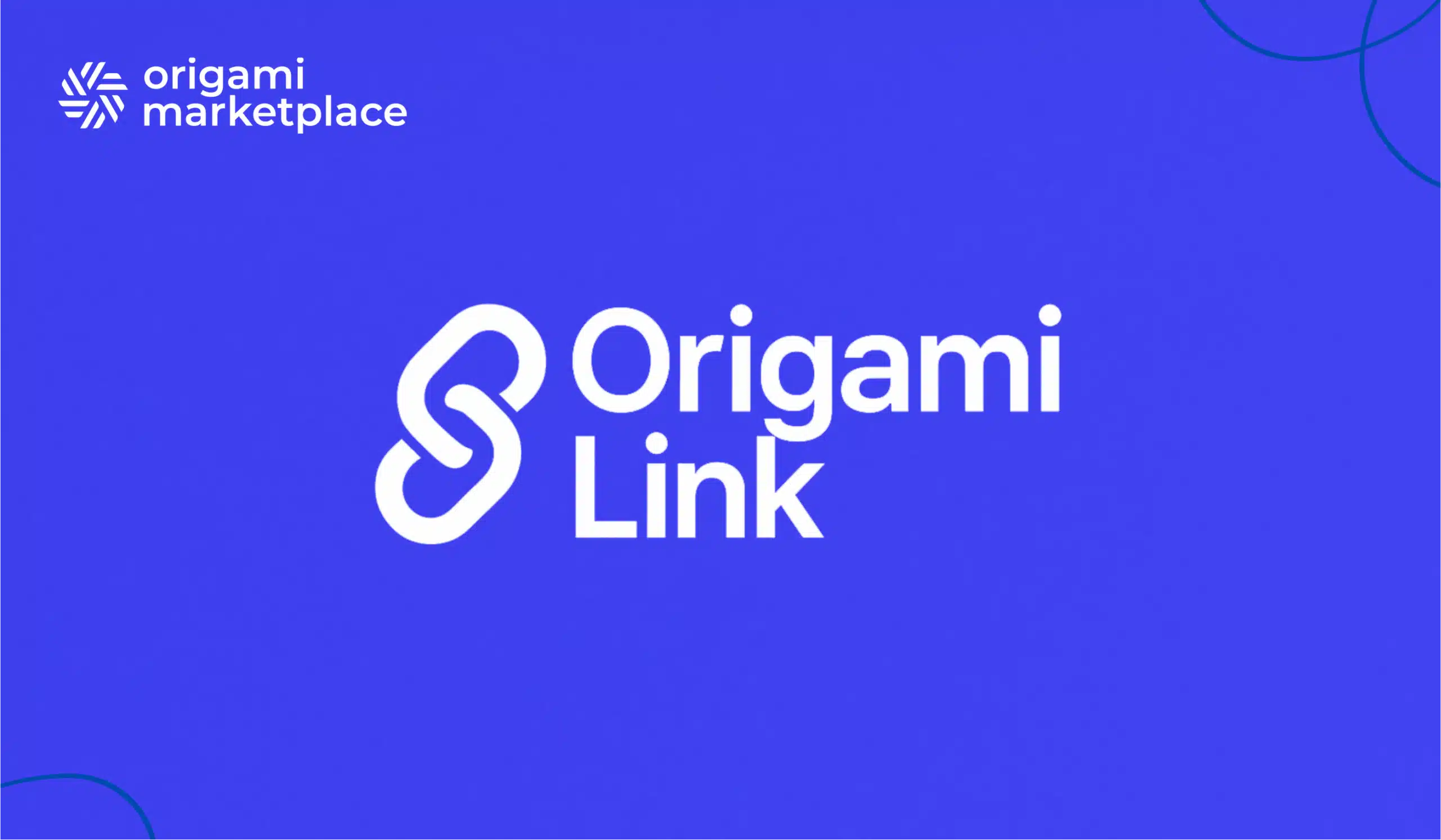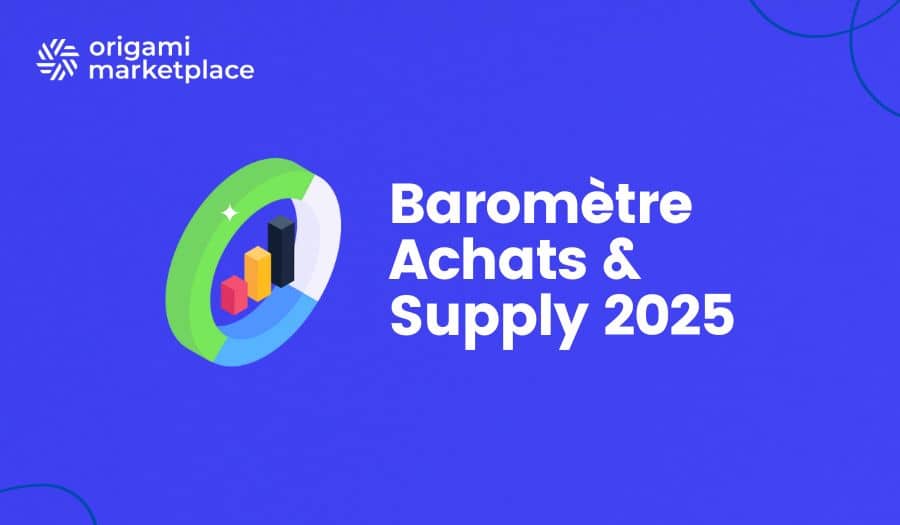How to build a marketplace? The A-to-Z guide 📙
- Arnaud
- 7 minutes reading

Build a marketplace is a unique opportunity to connect sellers and buyers without having to manage inventory. In 2023, these platforms accounted for more than 62% of global e-commerce sales, illustrating a considerable growth potential. In this guide, we present the key steps to launch your marketplace in 2025, covering the essential technical, legal, and marketing aspects.
We will also highlight the benefits of enlisting a specialized provider, such as Origami Marketplace, which offers a high-performing SaaS solution tailored to the demands of the modern market. We hope that this guide will serve as a comprehensive reference, whether you are a novice or a professional looking to refine your strategy.
- What is a marketplace?
2.1. Marketplace: definition
2.2. What are the different types of marketplaces? - Difference between build a marketplace and build a boutique-style e-commerce site
- How to build a marketplace?
4.1. Conduct market research
4.2. Define your concept
4.3. Determine your persona
4.4. Choose a business model
4.5. SaaS, On-Premise, or Open Source
4.6. Determine the payment system
4.7. What is the legal framework for marketplaces?
4.8. Define your budget
4.9. Find sellers - Prepare your launch
- Marketing strategy and post-launch follow-up
- Build a limitless marketplace starting today
- Frequently Asked Questions
👋 No time to read the whole article? Find the article summary here.
1. What is a marketplace?
1.1. Marketplace : definition
A marketplace is an online platform that connects sellers and buyers in order to facilitate commercial transactions. Unlike a traditional e-commerce store, where a single actor offers their products, a marketplace allows multiple sellers to offer their products on the same site. This intermediation model offers numerous advantages:
- For buyers, there is a diversity of products and prices.
- For sellers, it is an opportunity to reach a wide audience without having to invest in the logistics and marketing of their own site.
In addition to connecting parties, the platform often provides complementary services such as payment management, logistics, and customer support, thereby ensuring a secure and optimized framework for all transactions. Concrete examples such as Amazon, Etsy, or Vinted perfectly illustrate this concept, offering intuitive interfaces and handling the technical and legal aspects.
It is crucial to understand that a marketplace is based on the idea of pooling resources and benefiting from significant network effects, where the platform’s value increases with the number of registered users. This definition will help you grasp the challenges and opportunities related to building your own marketplace.
2.2. What are the different types of marketplaces?
Marketplaces come in several typologies depending on the actors involved and the nature of the products or services offered. They are generally divided into six main categories:
- B2B (Business-to-Business): These platforms connect businesses. They are used for the sale of industrial products, the provision of specialized services, or to facilitate strategic partnerships between companies.
- B2C (Business-to-Consumer): Here, companies sell directly to end consumers. Iconic examples include Amazon or Ebay, where user experience and inventory management are key elements to meet mass market demand.
- C2C (Consumer-to-Consumer): These marketplaces facilitate transactions between individuals. They often rely on rating and feedback systems to build trust, as seen with Vinted.
B2B2C (Business-to-Business-to-Consumer): This model is based on a partnership between two companies the supplier and an intermediary (marketplace, retailer) who handles marketing the products to consumers. In this way, the supplier benefits from the intermediary’s visibility and logistics while maintaining its brand image.
C2B2C (Consumer-to-Business-to-Consumer): Here, consumers contribute to the offer (ideas, content, or products) that a company then leverages and offers to other consumers, as demonstrated by BackMarket. This model fosters collaborative innovation and a fine-tuned adaptation of the offer to market expectations.
Service Marketplace: This model connects service providers (freelancers, consultants, artisans) with end clients, relying on rating systems to build trust and ensure the quality of the services provided.
Some platforms adopt a hybrid model, where the operator offers its own products in addition to those provided by other sellers. These distinctions are essential for choosing the positioning strategy and defining the functionalities of your marketplace. Indeed, the design of the interface, logistics, and payment management will vary depending on the type of marketplace chosen. Therefore, it is crucial to identify the typology that best aligns with your objectives and market demand.
Before you get started, analyze the demand and the competition. A well-targeted marketplace model (B2B, B2C, C2C, services...) will enable you to maximize engagement and profitability. If you opt for a niche, make sure it has growth potential, and that there are enough buyers and sellers to drive your platform.

Alexandre Duquenoy
→ Talk to our expert
2. Difference between build a marketplace and build a boutique-style e-commerce site
- In a classic online store, a single merchant is responsible for the entire sales chain: stock management, pricing, shipping, and after-sales service. This offers complete control over quality and the user experience, but also limits the offer to what the company itself provides.
- Conversely, a marketplace acts as an intermediary by bringing together several independent sellers on a single platform. The operator’s role is to provide a robust technical infrastructure, secure payments, and ensure the legal compliance of all transactions. This model allows for a much greater variety of products and services than a single store, thereby attracting a larger number of buyers. However, this multiplicity of parties also poses challenges in terms of dispute management, consistency of the user experience, and verification of the quality of the offers.
Ready to turn your B2B, B2C, or C2C marketplace vision into reality?
To help you develop the best platform possible, we’ve gathered all the must-have features, key technical considerations, and best practices in a comprehensive document:
Download the Specifications template 🗒
Perfect for smaller or medium-scale projects without a formal purchasing process. It will help you outline your requirements effectively and streamline your selection process.
Download the Request for Proposal template 📒
Ideal for larger, more complex marketplace projects with a formal purchasing department or advanced procurement policies.
3. How to build a marketplace?
3.1. Conduct market research
Before building a marketplace, the first step is to conduct an in-depth market study. It is imperative to understand the sector in which you wish to operate, to identify unmet needs, and to analyze the competition. This involves collecting data on purchasing behaviors, consumption trends, and the positioning of the existing players. A thorough market analysis will allow you to validate the viability of your project and to adjust your strategy accordingly. You must also identify your target audience and create detailed personas that represent your future users, both for buyers and sellers. This approach will help you pinpoint the essential features to integrate into your platform. Finally, do not forget to budget for this analysis phase, as it forms the basis of your business plan and financial projections.
3.2. Define your concept
After studying the market, you must precisely define the concept of your marketplace. It is essential to differentiate yourself: choose whether you want to position yourself in a general market or, on the contrary, exploit a specific niche. A niche positioning allows you to focus your marketing efforts and offer a unique value proposition to a specific segment of users.
The definition of your concept must include a description of the products or services offered, the added value compared to the competition, and how you plan to create synergies between sellers and buyers. Also, consider the technological and ergonomic aspects that will make your platform attractive and intuitive. A clear vision of your concept will serve as a roadmap for all the subsequent steps of the project.
3.3. Determine your persona
Creating personas is an essential step to understand and segment your audience. It involves outlining typical profiles of your future users by identifying their needs, behaviors, and obstacles. On the buyers’ side, you must define their expectations regarding navigation, security, and product quality.
For sellers, it is necessary to understand their motivations, their expectations in terms of management tools, and the criteria that would encourage them to join your platform. These personas will allow you to customize the user interface, define tailored customer journeys, and guide your marketing strategy. By relying on both quantitative and qualitative data gathered from surveys and interviews, you will be able to refine your offering so that it meets the identified needs precisely.

To support you in this key step of building your marketplace, download our free template to help you draft your personas.
3.4. Choose a business model
The business model defines how your marketplace will generate revenue. The classic options include sales commission, registration fees, subscriptions, or even one-time listing fees. Each model has its own advantages and disadvantages:
- Sales commission: Allows you to charge only when the transaction is successful, but requires carefully calibrated pricing to remain competitive.
- Subscriptions: Generate recurring revenue, but may discourage sellers if the cost is considered too high.
- Registration or one-time fees: Easy to understand, but risk deterring sellers due to a high initial cost.
The key is to adapt your model to your target market and the added value you offer. You can also consider a hybrid model that combines several of these options, in order to diversify your revenue streams and optimize the profitability of your platform.
3.5. SaaS, On-Premise, or Open Source
Building a marketplace involves choosing between three types of solutions: SaaS, On-Premise, and Open Source. Each presents advantages and disadvantages depending on your needs and resources. :
- SaaS (Software as a Service): A SaaS solution allows you to launch a marketplace quickly thanks to a turnkey platform accessible via the cloud. It offers a low initial cost with a subscription that includes maintenance, hosting, and updates, while ensuring security and scalability. However, the main disadvantage is that you do not actually own the solution.
- On-Premise: With an On-Premise solution, the software is installed directly on your servers, offering complete customization and total control without recurring fees. This model is suited for companies that wish to manage their infrastructure and avoid any dependency on an external provider. However, the initial investment can be high, and maintenance as well as updates require in-house technical skills, which can complicate the long-term management of the platform.
- Open Source: Open Source CMS solutions, such as WordPress or Prestashop with multi-vendor plugins, allow you to build a marketplace at a lower cost with no subscription or commission fees. They are a good option for testing a project before investing further. However, these solutions present limitations in terms of user experience, performance, and scalability, making their evolution difficult without a major overhaul in the event of significant updates to the CMS used.
The choice of model depends on your needs and resources. SaaS is ideal for a rapid launch, On-Premise for complete control, and Open Source CMS for testing a project at a lower cost. A detailed specification document is recommended to choose the best solution. You can learn more about this topic by reading our dedicated article on the subject.
3.6. Determine the payment system
The payment system is one of the crucial elements of a marketplace. In a multi-vendor model, managing transactions becomes more complex than in traditional e-commerce. You need to implement a payment system capable of managing the financial flows between buyers, sellers, and the platform operator. Several solutions exist, such as PayPal, Stripe, or specialized providers like MangoPay and Lemon Way. The important thing is to choose a solution that offers security guarantees, compatibility with multiple currencies, and the ability to handle subscriptions or recurring payments. Don’t forget to evaluate the transaction fees and the quality of the technical support provided by the provider, as these elements will directly impact your profitability and the trust of your users.
3.7. What is the legal framework for marketplaces?
The creation of a marketplace entails numerous legal and regulatory obligations. It is imperative to draft clear and comprehensive General Terms and Conditions of Sale (GTC) that specify the responsibilities of sellers, buyers, and the platform. These GTC should notably cover:- Payment and commission terms,
- Dispute resolution and returns management,
- The protection of personal data, in accordance with the GDPR
3.8. Define your budget
Establishing a projected budget is a fundamental step. You must take into account all costs related to:
- The design and development of the platform,
- Hosting and maintenance (especially if you opt for an On-Premise or Open Source solution),
- Marketing campaigns and communication,
- Legal and administrative fees for starting the business.
- The budget can vary considerably depending on the complexity of the project and the chosen technical solutions.
For example, custom development can cost from €35,000 to over €150,000 for a high-performing MVP. A precise estimate will allow you to raise the necessary funds and ensure sound financial management from the start.
3.9. Find sellers
Without quality sellers, even the best marketplace cannot thrive. From the very beginning, you need to implement a seller recruitment strategy. This involves drafting a convincing sales presentation that details the benefits of joining your platform (reduced commission, increased visibility, marketing support, etc.). It is important to target sellers that align with your niche or positioning, whether by conducting online research or by attending trade shows to find prospects. Also, be sure to verify their online reputation and reliability, because the quality of the sellers determines the credibility and success of your marketplace.
Ensure your success today. Take advantage of our free configurator to define the outline of your project and discuss it with one of our experts for a personalized study.

4. Prepare your launch
The launch of your marketplace must be carefully planned to maximize its impact. A pre-launch campaign helps generate excitement and gather initial feedback. It involves setting a launch schedule, crafting a strong marketing message, and choosing the appropriate communication channels (social media, email marketing, partnerships, targeted ads, etc.).
A successful launch strategy also includes offering promotional deals for early users, platform demonstrations, and online events. This moment is crucial to build your brand image and establish a trusting relationship with your future users. Regular monitoring and performance analysis from the outset will allow you to quickly adjust your strategy to ensure sustained growth and a gradual scaling of your marketplace.
5. Marketing strategy and post-launch follow-up
Once your marketplace is launched, the work doesn’t stop. The success of your platform strongly depends on a solid marketing strategy and regular performance monitoring.
First, it is essential to invest in search engine optimization (SEO) to ensure organic visibility. Advertising campaigns on Google Ads and on social media platforms such as Facebook, Instagram, TikTok, or LinkedIn should be deployed to reach your target audience. At the same time, it is recommended to implement content strategies (blog articles, explanatory videos, infographics) in order to attract and educate users about the advantages of your marketplace.
Next, post-launch monitoring is crucial. Use analytics tools to measure key indicators such as conversion rate, number of sign-ups, transaction frequency, and customer satisfaction. This data will allow you to
identify areas for improvement and optimize the user experience.
Furthermore, customer retention is a strategic aspect. Implementing a review and rating system, as well as loyalty programs, helps to establish a lasting relationship with your users. Finally, do not hesitate to enlist the help of a specialized provider to support the growth of your marketplace, such as Origami Marketplace, which offers a proven SaaS solution to accelerate the launch and scaling of your project.
Invest in SEO for natural referencing, use paid advertising for a quick start (Google Ads, Facebook, TikTok) and implement an engaging content strategy (articles, videos, testimonials). Build loyalty among your first users with reward programs and exclusive offers. Thorough performance analysis (traffic, conversion rates, customer satisfaction) will also be essential to adjust your strategy and optimize your results.

Antoine Mantel
→ Talk to our expert
6. Build a limitless marketplace starting today
Launching a marketplace in 2025 is an ambitious project with great potential. By following the key steps in this guide, you will be ready to tackle the technical, commercial, and legal challenges that come with it. Every decision, from choosing the business model to the marketing strategy, will shape the future of your platform.
So, the opportunity is here: which direction will you choose to bring your marketplace to life and capture its share of the rapidly expanding market? Launching your marketplace goes far beyond a simple technical project: it’s an exciting adventure that opens up an endless array of possibilities.
You now have the keys to transform an idea into a dynamic platform capable of revolutionizing online commerce. The question remains: what vision will you infuse into your marketplace to transform the e-commerce landscape? Share your ideas, dare to innovate, and most importantly, embark on this adventure that is just waiting to be experienced.
Our team is ready to support you: in just a few minutes of a phone call, we will identify your needs and guide you toward the ideal solution. Schedule a meeting with one of our experts today to bring your project to life.
Frequently asked questions:
A SaaS marketplace solution is an all-in-one tool for creating and managing your multi-vendor e-commerce site. With its advanced features, it not only simplifies the management of interactions between sellers and buyers but also automates many tasks, eliminating time-consuming manual processes. The SaaS model offers regular updates, ensuring that your marketplace always stays at the forefront of technology and complies with the latest security standards. Additionally, you receive personalized support from a dedicated project manager, ensuring smooth integration and responsive assistance in the event of a technical issue. Transactions are secure, your product catalog can be easily expanded, and stock management and sales data collection are simplified. Customizable and scalable, this solution perfectly adapts to the specific needs of your sector, giving you full flexibility to drive your business and achieve your goals. If needed, a high-performance backup system ensures business continuity.
Yes, Origami Marketplace provides a customer interface (front-end) tailored to your specific needs: either a fully customizable front-end from A to Z or a pre-designed template. We also offer a basic theme and mobile application, developed in collaboration with one of our expert partner agencies, to meet the unique requirements of a modern marketplace. Additionally, you have the flexibility to create your own front-end or delegate this task to a professional of your choice.
Our pricing is flexible and scalable, based on a monthly subscription that provides access to all the features of our solution, including personalized daily support and regular updates. Our pricing model can be adjusted to meet your specific needs, ensuring a tailor-made solution. For a detailed quote tailored to your project, please schedule an appointment via this link. A member of our team will get in touch with you as soon as possible.
You can view the full list of our features and various partner integrations on this page. If you don’t find exactly what you’re looking for, please note that our architecture supports nearly unlimited integrations, and we can automate many tasks to streamline your day-to-day management through customized workflows.
Origami Marketplace’s scalable architecture is adaptable to all types of markets. We currently support companies in various B2B sectors, major B2C brands, and emerging C2C players focused on the circular economy.
We offer a free specifications template that covers all the main functionalities expected from a marketplace. This document serves as a starting point and can be customized to fit the specific needs of your project. Our team is available to help you add additional features and ensure they perfectly meet your expectations. You can download it here.
Origami Marketplace is a comprehensive multi-vendor solution, perfect for supporting your commercial activities. As a headless solution, it is adaptable to all sectors, whether B2B, B2C, C2C, or C2B2C. With our API, you can connect to a wide range of solutions and technical partners, unlocking numerous possibilities for enhancing your ecosystem.
• Centralize offers from different sellers: Host products from various merchants on your platform and earn commission on each sale.
• Simplified stock management: Boost your sales while delegating the responsibility of storing and shipping products to the sellers.
• Increase profits: Expand your catalog with products from multiple vendors to attract more customers and increase your revenue.
• Automate processes: Manage product listings, pricing, orders, and logistics through automated workflows, allowing you to focus on your core business.
Yes, we offer a free demonstration of our solution. You can schedule an appointment with our team by following this link. One of our experts will reach out to you shortly to discuss your project and arrange the demonstration.
How do you build a marketplace in 2025?
Do you want to build a marketplace but don’t have time to read everything? Here’s the essentials!
✅ Definition: A marketplace is a platform that connects sellers and buyers without managing inventory. This model offers buyers a wide variety of products and enables sellers to reach a large audience without high logistical costs.
📌 Differences with a traditional e-commerce site: Unlike an online store, a marketplace brings together multiple sellers on a single platform, requiring more complex management (payments, logistics, legal compliance).
🛠️ Key steps to build a marketplace:
- Market research: Analyze the competition and identify your audience.
- Concept definition: Position yourself in a niche or general market.
- Choice of business model: Sales commission, subscription, registration fees…
- Technical solution: SaaS (e.g., Origami Marketplace) for rapid deployment or Open Source/On-Premise for greater flexibility.
- Legal framework: Draft clear Terms and Conditions (GTC) compliant with GDPR and choose a suitable legal structure (SASU, EURL).
- Marketing strategy: SEO, online advertising, partnerships to attract sellers and buyers.
🚀 Launch & follow-up: Good communication, a secure payment system, and post-launch performance analysis are crucial to ensure growth.


